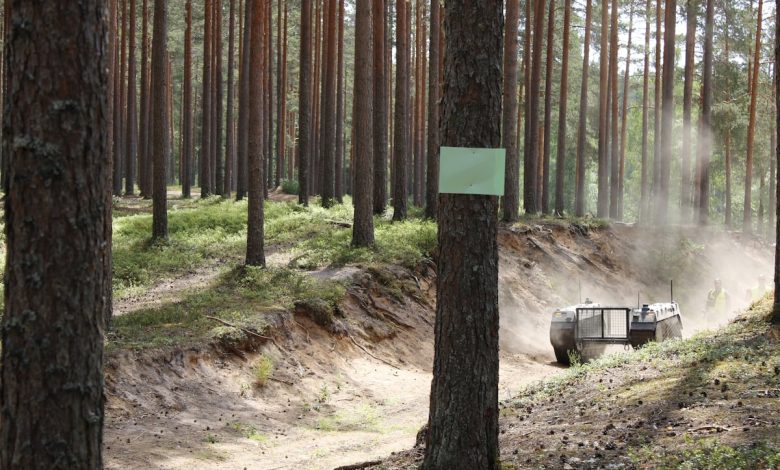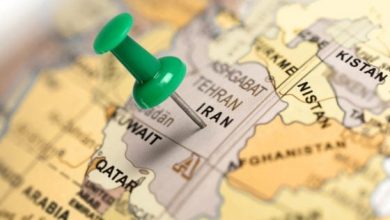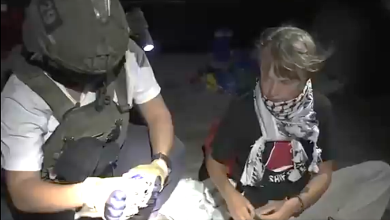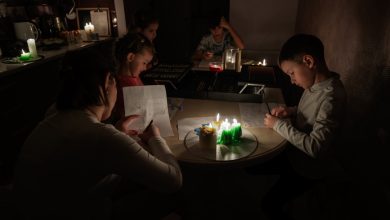European Defence Fund funnels money to drones, hypersonic defense, AI

PARIS — The European Union’s executive arm picked 62 defense projects for a combined €910 million ($1 billion) in financing in the latest funding round by the European Defence Fund, focusing on areas including drones, autonomous mine sweeping and defense against hypersonic weapons.
Flagship projects in the funding round include Eurosweep, which aims to develop an unmanned minesweeping system, ENGRT II to develop a next-generation rotorcraft, and the iMUGS2 project to test unmanned ground vehicles, the European Commission said on Wednesday.
“This is a major step to close critical defense capability gaps and reinforce Europe’s strategic autonomy,” European Commissioner for Defence and Space Andrius Kubilius said in a post on social media. The latest EDF funding allocation “supports both advanced R&D and real-world defense capabilities,” he said.
The fund started operating in 2021 to support collaborative defense research and development in Europe, and the latest round means the EDF has now allocated half of its budget of nearly €8 billion through to 2027. The commission picked the most recent winners from a record 297 proposals received in response to the EDF 2024 call for proposals.
Ukraine’s defense industry was able to participate in EDF projects for the first time, which “deepens our cooperation and helps integrate Ukraine into the European defense industrial base,” Kubilius said.
The EDF provides significant funding, and its budget for the 2021-2027 period accounts for around 15% of all EU defense R&D spending, with only France and Germany spending more, the International Institute for Strategic Studies wrote in an October report.
Small and medium-sized companies accounted for 27% of total funding in the 2024 call, according to the commission. That’s the highest yet, after three rounds in which SMEs accounted for between 18% and 20% of funding.
Among specific projects, European Next Generation Rotorcraft Technologies Phase II or ENGRT II received €100 million in EU funding on an estimated total cost of €160 million. The project is led by Airbus Helicopters at the head of a consortium of more than 40 companies and institutes.
The iMUGS2 project, coordinated by Milrem, received €50 million for field testing and a trial of unmanned ground systems, with the project seeking to develop system architectures to allow new and legacy military vehicles to integrate autonomous and swarming capabilities.
Milrem was founded in Estonia and now belongs to EDGE Group, a state-owned technology conglomerate of the United Arab Emirates.
Eurosweep led by Norway’s Forsvarets Forskningsinstitutt was awarded €28.5 million to develop a naval minesweeping system with autonomous features.
The EDF also provided €78 million in financing for a classified project that aims to counter hypersonic glide vehicles.
Funding included €35 million for Scepter, a research program to develop interoperable and standardized radar, electronic warfare and communication systems for airborne platforms, coordinated by Spain’s Indra Sistemas.
The Boosting European Advanced Missile System Technologies project, or Beast, aims to develop a future short-range, air-to-air missile under the lead of Diehl Defence, and received €34.9 million. A project to upgrade European cyber defense led by the Estonian Ministry of Defence’s CR14 and called Citadel Range was allocated €48 million in funding.
A concept study for a new mid-sized European military transport aircraft with a 20-ton payload, led by Airbus within the Fasett2 project, received €30 million in funding. A Rheinmetall-led project to develop non-jammable precision munition called Ninja2 received €29.6 million.
The EDF also funded five smaller projects working on resilient drone navigation or swarming capability in non-permissive environments, and four projects to apply artificial intelligence for satellite-image analysis, including for the detection and monitoring of military activities.
Rudy Ruitenberg is a Europe correspondent for Defense News. He started his career at Bloomberg News and has experience reporting on technology, commodity markets and politics.







